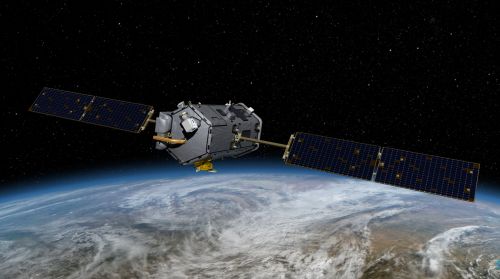

Scientists are already exploring bridges to private foundations or international agencies to safeguard continuity. But complex legal frameworks govern control over orbit and data generation.

By Matthew A. McIntosh
Public Historian
Brewminate
Introduction
In hushed corridors of NASA, the term “Phase F planning” has emerged as a quiet alarm bell. It refers to formal shutdown procedures for spacecraft at or near mission completion. In this case, the actors drafting these protocols are not concluding tired, aging systems, but two of the agency’s most vital tools in climate observation: the Orbiting Carbon Observatory‑2 and its station‑mounted sibling OCO‑3.
These satellites, far from relics, are still delivering the kind of precision data that scientists, farmers and policymakers depend on. Their prospective termination has been catalyzed by the Trump administration’s 2026 budget proposal, setting off a cascade of stunned reactions across scientific and political communities.
The Hidden Value of Carbon Satellites
OCO‑2, launched in 2014, was conceived to fill a glaring gap in atmospheric science. It measures sunlight absorption by carbon dioxide with accuracy better than 0.3 percent, a minute threshold that nonetheless grants us a daily, high-resolution window into the silent, invisible flows of our planet’s most troubling greenhouse gas. Its sibling, OCO‑3, mounted on the International Space Station in 2019, carries forward that mission with added flexibility, offering us snapshots of photosynthesis over cities and forests alike.
These instruments have illuminated carbon stories in ways traditional ground networks never could. They’ve traced emissions from power plants and forests, tracked the Amazon’s surprising shift to a net CO₂ emitter in certain years and mapped plant growth with a surgeon’s precision. Farmers rely on this data to forecast yields; climate models are sharpened by it. Lose them, and that vital insight evaporates.
Budget Cuts, Abrupt Shutdowns
The Trump administration’s 2026 budget proposal quietly removes funding for these Earth‑watching missions, effectively ordering their demise. Though described as “past prime mission,” this judgment clashes with the reality of their ongoing yield and relevance. NASA officials have reportedly been instructed to draw up termination plans, while some inside the agency are privately exploring future funding from the private sector or international partners. These behind‑closed‑doors maneuvers suggest a recognition of the satellites’ value—even as federal coffers withdraw.
A Ripple of Resistance

The scientific community’s response has been immediate and fervent. David Crisp, a retired NASA scientist who led both missions from their earliest days, warns that the move to terminate the satellites removes a vital national asset. Congressional letters pressing for retention of funding illustrate alarm that critical data may fall prey to political whim, rather than budgetary necessity.
At the same time, agriculture and environmental stakeholders worry publicly that the abrupt removal of these observational tools will blind us to carbon fluxes that shape food security, climate policy and international treaties.
More Than Numbers: A Loss of Trust?
There is a deeper layer here, one that a chart or budget brief cannot capture. It’s the erosion of confidence in institutions that promise to watch the world we inhabit. When Congress and the public lose access to consistent, impartial carbon measurements, climate oversight becomes fractured. It becomes harder to assess progress on emissions targets, to detect worrisome trends before they escalate, to hold anyone, from industries to nations, to account.
Climate change is not a war waged in obvious battle lines. It’s a series of fine imbalances, cascading shifts, subtle feedback loops. In that struggle satellites like OCO-2 and OCO-3 are lighthouses: silent, remote, but essential for navigation. Scrub the science, and we steer blindly toward uncharted waters.
Looking Ahead: Science or Statemanship?
As summer slides into election season, these satellites become symbols of something larger: where a nation places its trust, whether in empirical fact or political narrative. Scientists are already exploring bridges to private foundations or international agencies to safeguard continuity. But complex legal frameworks govern control over orbit and data generation, and they do not bend easily to urgency.
If Congress acts in time, OCO-2 may outlive political cycles; if not, 16 years of careful carbon tracking risk falling dark, our collective memory of atmospheric patterns, erased not by malfunction but by choice.
Originally published by Brewminate, 08.11.2025, under the terms of a Creative Commons Attribution-NonCommercial-NoDerivatives 4.0 International license.


